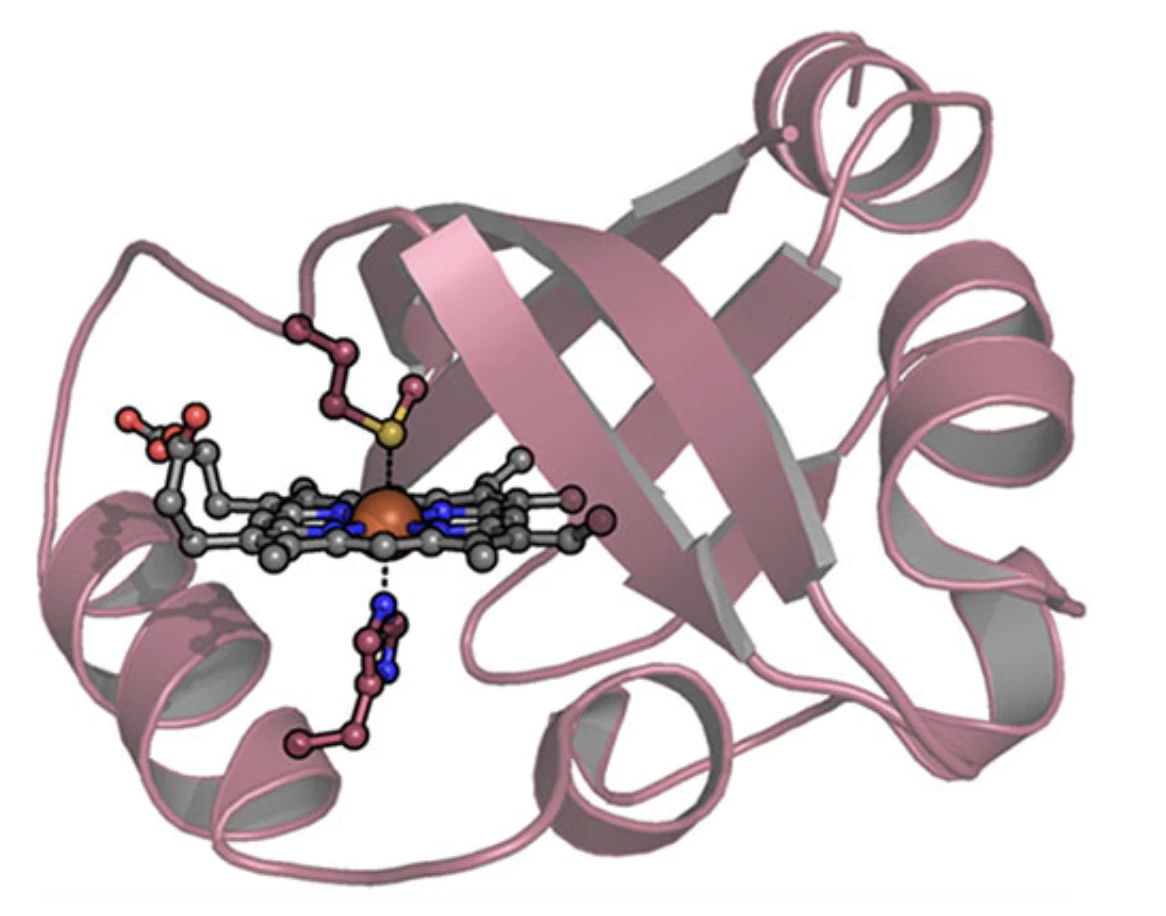An engineered protein that acts like a molecular sponge has the potential to change how carbon monoxide poisoning is treated, chasing down CO molecules in the bloodstream and helping the body flush them out in just minutes, without the risk of short- or long-term health issues that come with the current frontline treatment, pure oxygen.
Researchers at the University of Maryland School of Medicine (UMSOM) were focused on a natural protein known as RcoM, found in the bacterium Paraburkholderia xenovorans. In bacteria, RcoM detects trace amounts of CO in the environment, so the engineers believed this could be harnessed to scavenge for CO molecules attached to red blood cells instead.

The re-engineered protein is the basis of the therapy they call RcoM-HBD-CCC. While it's not exactly a catchy name, it possesses somewhat of a superpower when it comes to cleaning out CO. It selectively binds tightly to the poisonous CO molecules, while ignoring oxygen (O2) and other critical chemical compounds, such as blood-pressure-regulating nitric oxide (NO), in the body.
Carbon monoxide poisoning is a challenge to treat for several reasons. To start with, exposure can creep up on the body, which is why it's so often called the “silent killer." The gas is odorless and invisible, and can leak from faulty gas heaters or build up from burning natural or propane gases – for example, from cooktops – in poorly ventilated spaces. It's also a major component of smoke inhalation during house fires and, of course, is deadly if gas vehicles are running inside closed areas like a garage.
Once in the body, CO molecules hijack your red blood cells, overpowering oxygen in the bloodstream and shutting off critical O2 supply to the brain, heart and other organs. Because the gas binds to hemoglobin so efficiently – 200 to 400 times better than oxygen – a high enough concentration of it will result in unconsciousness in minutes, which can lead in permanent organ damage – or worse.
Each year, CO poisoning results in around 50,000 emergency department visits, and 1,500 deaths, in the US alone.
Treatment to clear the blood of its grip is also a race against time. Right now, we only have one medical intervention for those who manage to make it to hospital – flooding the body with 100% pure oxygen, often in a pressure chamber. But it's a slow process, taking an hour or more to flush CO out of the bloodstream, and even when patients survive, nearly half are left with long-term heart or brain damage.
In mouse models, RcoM-HBD-CCC therapy was able to clear CO from the blood in minutes, with it safely flushed out of the body through urine. The engineered antidote acts like a sponge, seeking out and soaking up CO attached to red blood cells. In mice, half the CO in the bloodstream was cleared out in less than a minute, freeing the hemoglobin on the cells to once again start carrying O2.
Importantly, other experimental scavenger hemoproteins haven't been able to selectively target CO, and as a result also bind to NO – so infusions of such hemoproteins can lead to a reduction of NO in the blood, tightening blood vessels and spiking blood pressure. In the study, RcoM-HBD-CCC showed it didn't have this affinity with the vital molecule.
“Unlike other protein-based treatments, we found the compound caused only minimal changes in blood pressure, which was an exciting finding and raised the potential for this new molecule to have clinical applications,” said study corresponding author Dr Mark T. Gladwin, Dean of UMSOM. “This has the potential to become a rapid, intravenous antidote for carbon monoxide that could be given in the emergency department or even in the field by first-responders.”
While this is still preliminary research, the results are promising and now warrant further pre-clinical studies to assess broader safety and dosing, paving the way for human trials. However, the therapy's selectivity and speed has the potential to be the first low-risk, rapid-response treatment to CO poisoning, where every second is critical in preventing organ damage and death.
“This molecule could be a game-changer because it can directly and rapidly remove carbon monoxide from the body with such a low risk of off-target side effects,” said Dr Jason J. Rose, Associate Professor of Medicine at UMSOM. “Given the promising results, we also see the potential for RcoM-HBD-CCC use in other areas, like as a blood substitute in severe anemia or hemorrhagic shock.”
The study was published in the journal Proceedings of the National Academy of Sciences (PNAS).





